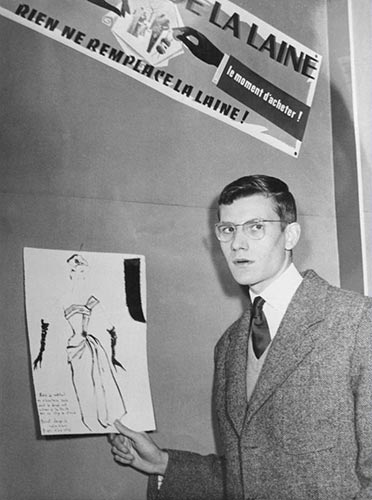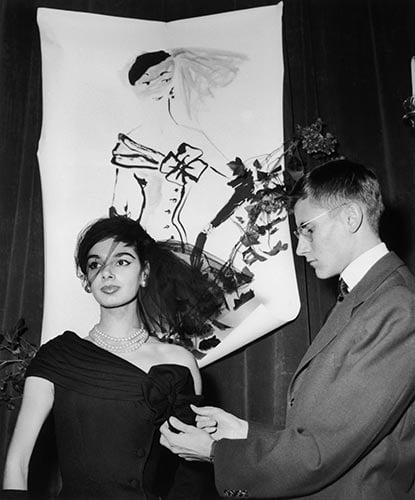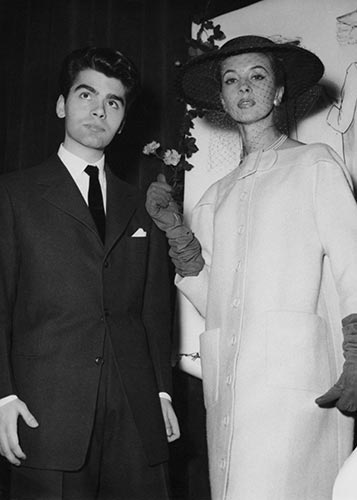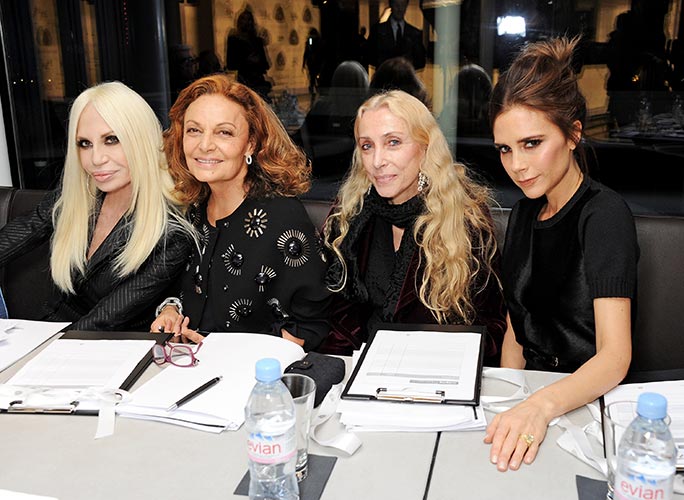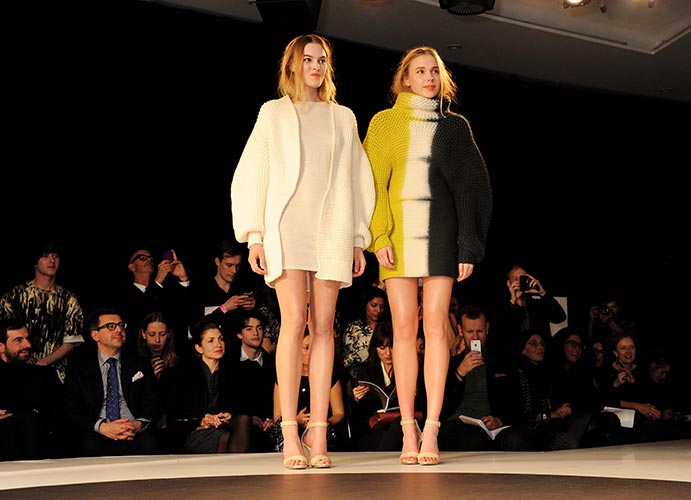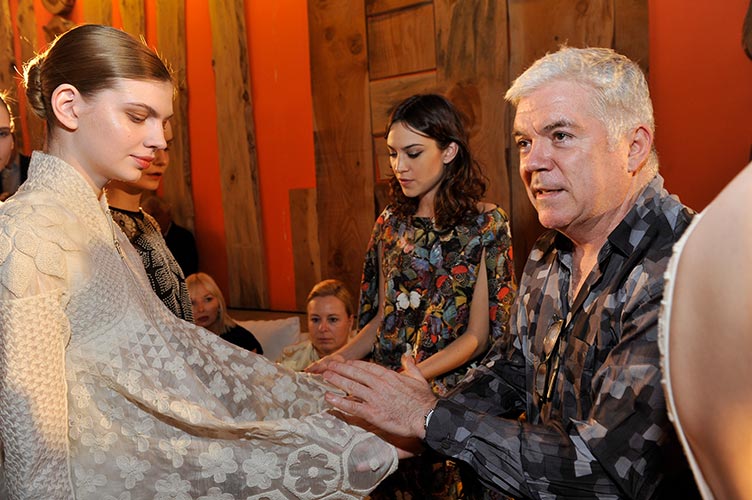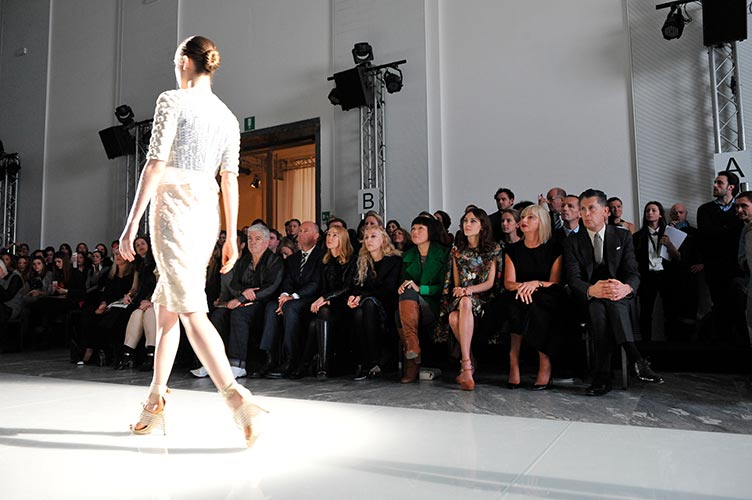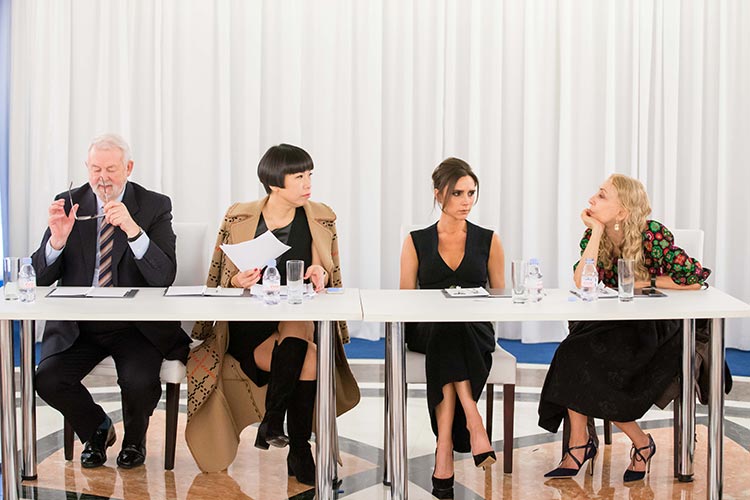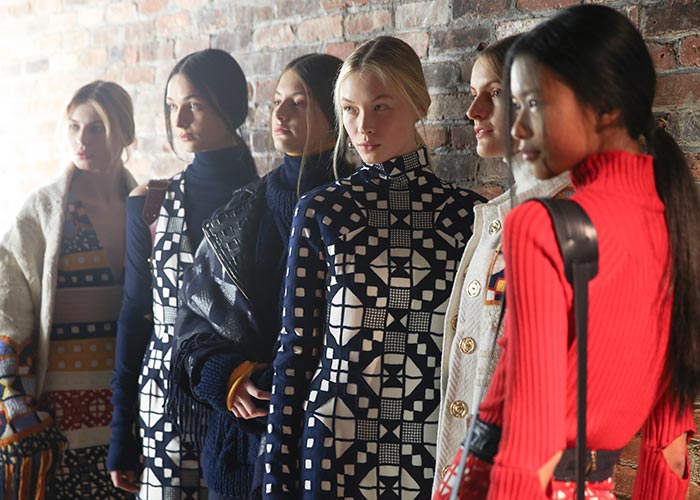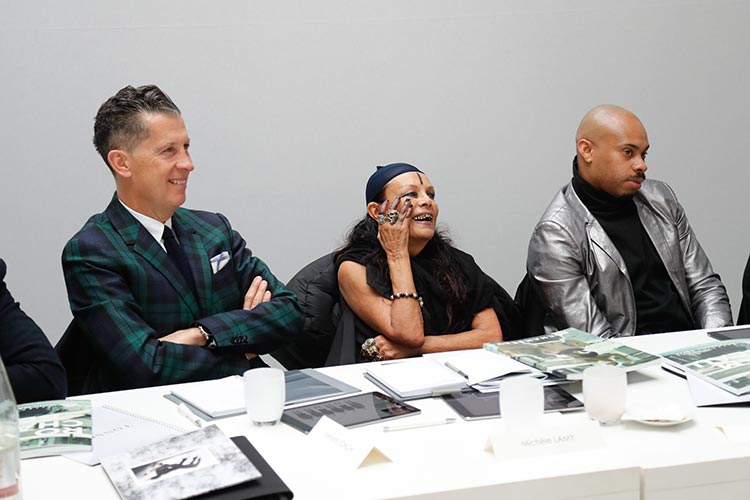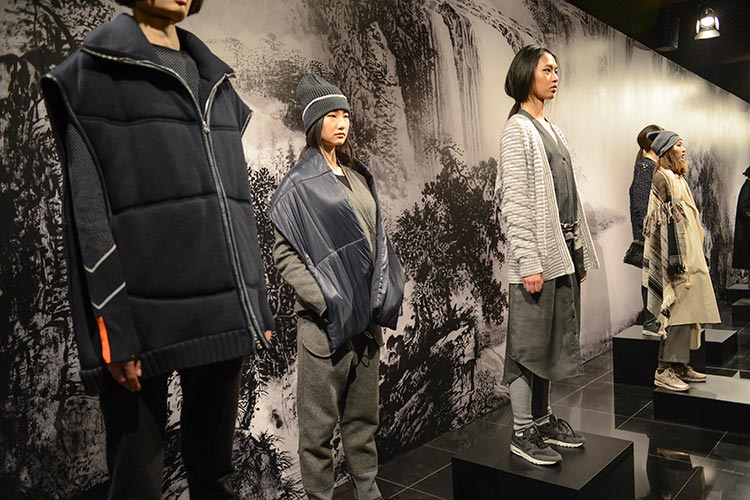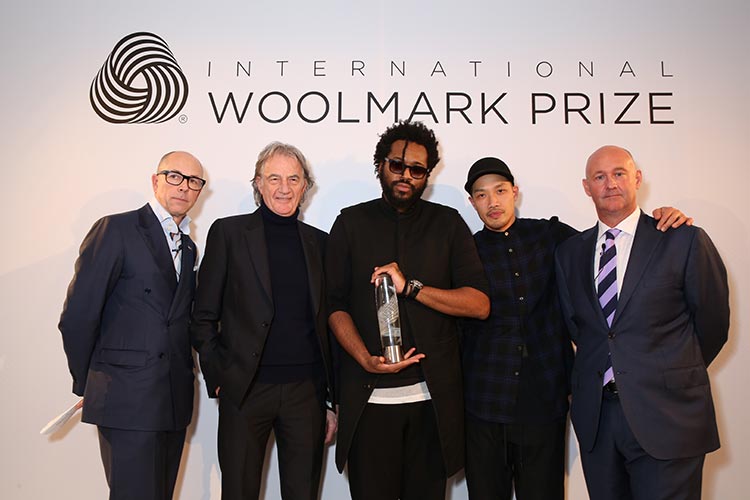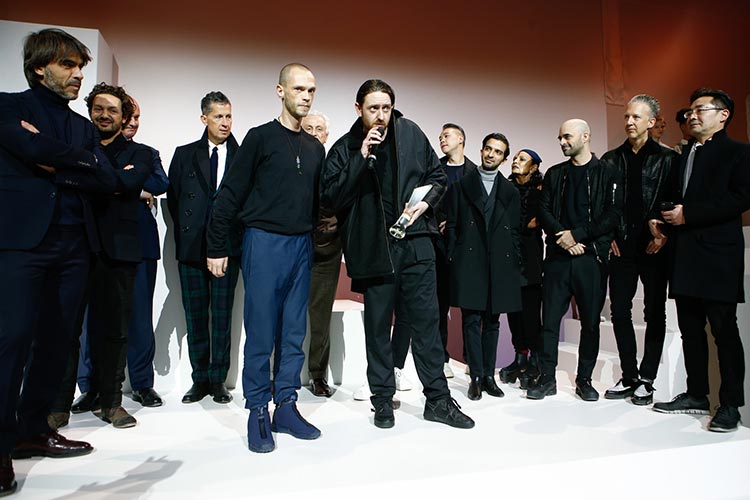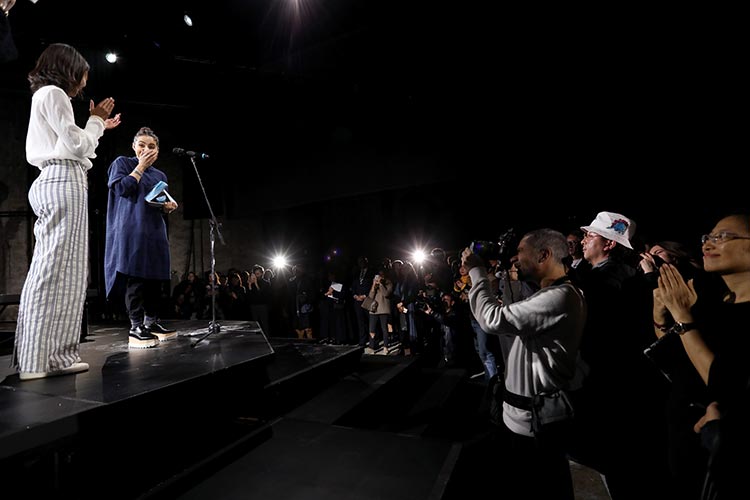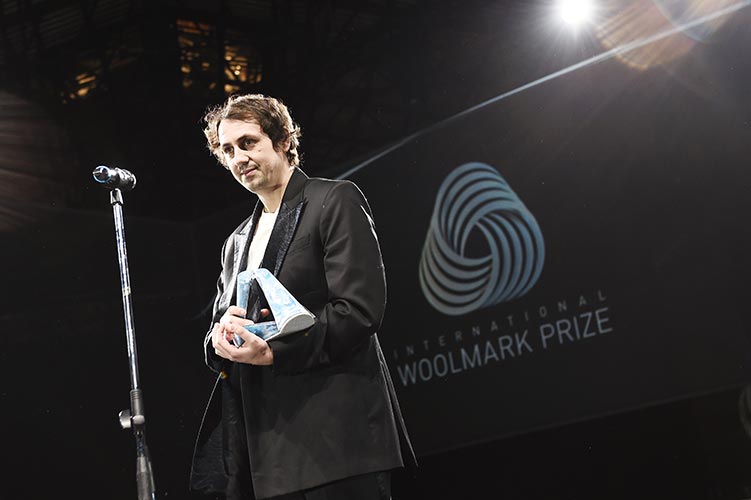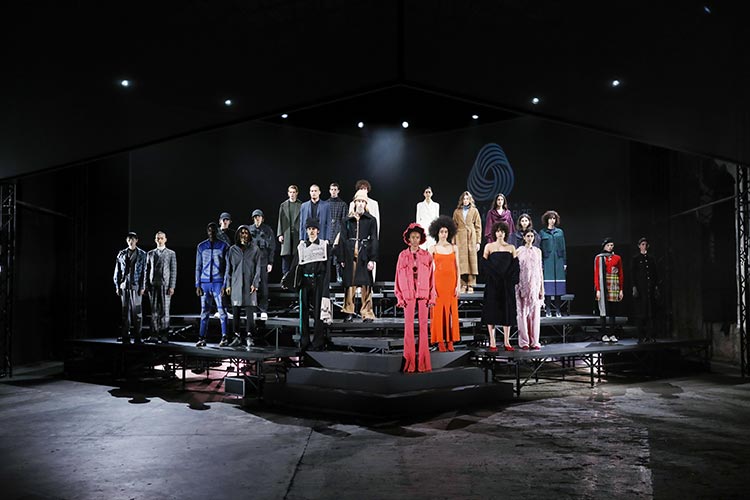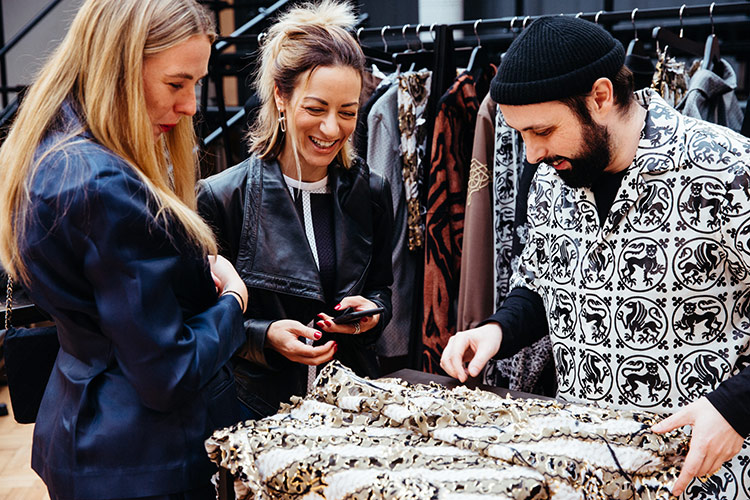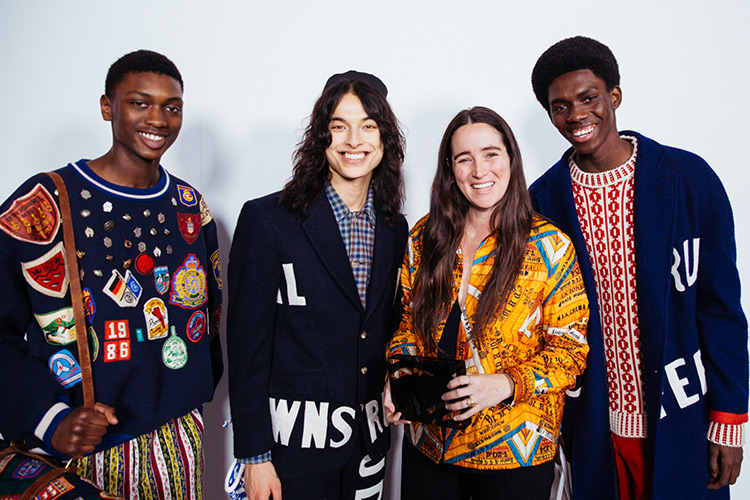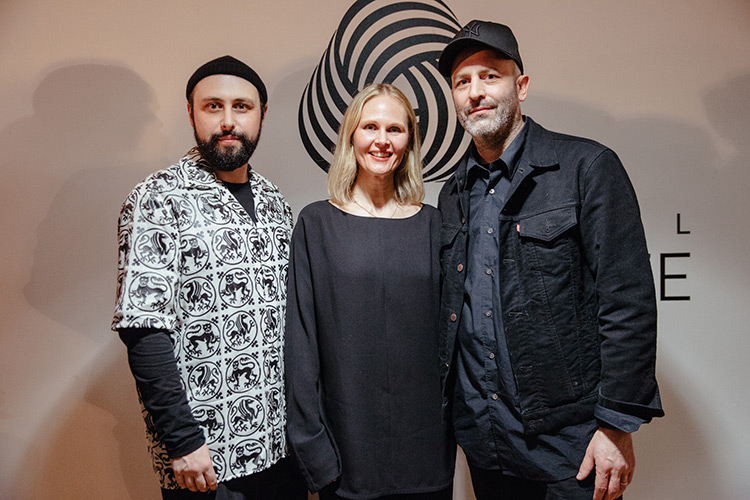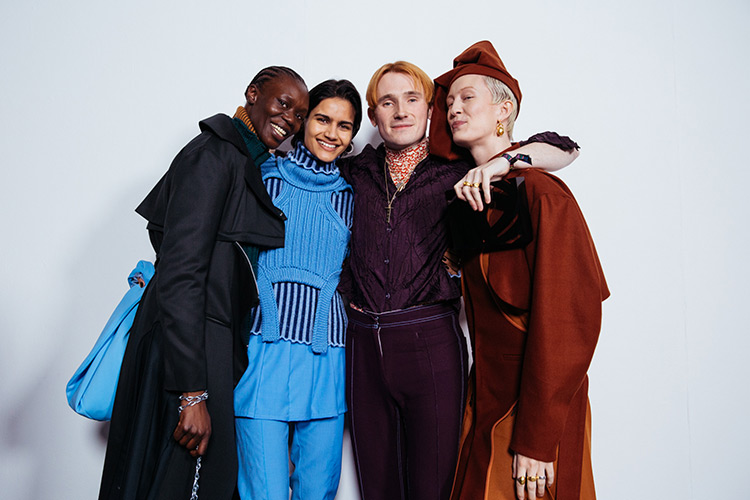Known as an important fashion design competition, the largely untold history of the International Woolmark Prize is a veritable lesson on the course of fashion and connects an astonishing list of industry legends, both past and present – all with the fibre of wool.
Dotted repeatedly throughout the biographies of the fashion icons of the 20th century is the unlikely name of the organisation International Wool Secretariat. Founded in 1936 to promote wool to the global market, the IWS, as it was known, brought together the woolgrowers of Australia, New Zealand and South Africa who were truly visionary in their ambition to market wool to the other end of the industry and, indeed, on the other side of the world. This, of course, was all well before international travel was commercialised and the advent of the internet, yet this unifying industry body saw that fashion designers – particularly those at the very early stages of their careers, those free of the restraints of convention of textile, cut and form – could be the vehicles through which to open the minds of consumers to the possibilities of wool and thus increase its demand around the world.
This vision to match the talent of young designers with the adaptability of wool produced an annual design competition that took place in Paris, and dates back further than any other major designer prize still running today. Since the 1950s, not only has this prize served as a pillar of support for young creatives, but it has undoubtedly contributed to key moments in the canon of contemporary fashion. The earliest records of the International Wool Secretariat’s design competition attribute none other than Valentino Garavani as one of its first winners, who at the time was a fashion student in his teens in Paris. The prize brought the young Italian a great deal of notoriety, so much so that he soon after landed his first job in 1950 with couturier Jean Dessès before his own now-iconic first name developed into what today remains one of the most revered international fashion houses.
The 1950s were indeed a significant moment for wool. The auction houses in the southern hemisphere were seeing a healthy peak in the price of raw fibre, and in the north, this wool was being transformed into some of the most extraordinary garments through what was then the only prize of its kind. In 1953, a designer by the name of Yves Saint Laurent entered the International Wool Secretariat’s design competition when he was just 16 years old and admirably won third prize. The jury including Christian Dior and Hubert de Givenchy granted the teen an admirable third prize, and so Saint Laurent, who was born in Algeria, travelled to Paris for the first time to receive his award. The following year, the prize grouped together what was to become a veritable who’s who of the fashion industry, yet Saint Laurent and his fellow competitors were still totally unknown at the time. Nevertheless, a jury comprised of Pierre Balmain and again Hubert de Givenchy awarded Saint Laurent first place in the dress category, and Karl Lagerfeld – who was 21 years old at the time – first place in the coat category.
The impact of this initiative on the course of fashion’s history cannot be overestimated, as it was from this 1954 edition that Saint Laurent, it’s said, was hired on the spot by Dior himself, before going on to create his own eponymous empire. Likewise, Lagerfeld, through the attention he gained from the competition, was hired by one Pierre Balmain who also put his prize-winning wool coat into production.
What remains true throughout the history of this prize is that it has never solely focused on the winner nor on the winnings. The International Wool Secretariat’s design competition quite intentionally connected the industry’s establishment with these unknown yet talented individuals. Focusing on pure design, this early version of the prize allowed young creatives to submit sketches of garments, the best of which were realised in three-dimensional form by the finest couturiers of the day, including Jacques Fath and Givenchy.
Today, the International Woolmark Prize’s advisory council, judging panel and mentor program are made up of the top editors, retail buyers and indeed designers in the industry, and continues this legacy of connecting like-minded people through the fibre of wool. “It’s important for young emerging designers to be acknowledged by industry experts, fashion editors and buyers in order to grow,” remarked André Leon Talley when he judged the 2016/17 International Woolmark Prize. “The best is when it’s by people who have a respected idea of wool,” he added.
Given wool has always been sold as a raw commodity, as its price has fluctuated over the years so too has the activity of this design prize. During the late-50s until the 1980s while prices were low, what is now The Woolmark Company focused on allocating funds to maintain the livelihood of Australia’s woolgrowers and their sheep. And in the 1980s when prices once more boomed, the prize was reborn as the Woolmark Award and again attracted the best designers from across the world. This time it was all about the Italians. Giorgio Armani, who won the award in 1989 and then again in 1992, is the only designer who has won two editions outright. Also Romeo Gigli, one of the most influential designers of the decade, known for turning the sharp shoulder into a softer, rounded form, won in 1990. It was also in the early 1990s that American designers Donna Karen and Ralph Lauren won the Woolmark Award, shifting the focus for the first time to the Americas.
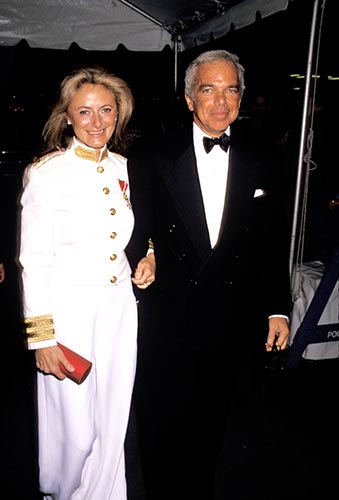
Ralph Lauren and Ricky Low-Beer at the woolmark awards, 4 June 1992 at New York public library in New York city. © Ron Galella/getty.
With wool prices again fluctuating and in seeing a greater need to support fashion designers whilst they’re still studying at university, the prize developed an offshoot in partnership with The Royal College of Art in London. Second-year design students were paired with major fashion houses including Escada and MaxMara, and were tasked to design and produce a collection to a brief, deadline and budget, where the winner received a placement at the company.
This format continued until the late 1990s and then in 2008, to commemorate the 200th anniversary of the arrival of the first bale of Australian-grown Merino wool in Europe, the award was again reborn as the Woolmark Project Protégé. Ten young creators were paired with world famous designers including Donatella Versace, Calvin Klein, Paul Smith and, in a legendary return to the prize, Karl Lagerfeld, who acted as personal mentors to their chosen protégés. Also in 2008, Chinese designer Qiu Hao was announced the winner of The Woolmark Prize by Sonia Rykiel in Paris, and The Woolmark Company leveraged support from retailers and secured Parisian concept store Colette as the exclusive stockist of Qiu Hao’s limited-edition wool garments.
Today, the International Woolmark Prize’s retail partner network is a crucial ingredient to the long-term success of the designers involved in the prize. Every year, the head buyers of some of the best stores from around the world, including Lane Crawford, Boon The Shop, mytheresa.com, MATCHESFASHION.com and net-a-porter.com are instrumental in then bringing these garments to consumers in London, Paris, Hong Kong, New York, Sydney and of course to the online community. “The International Woolmark Prize is most definitely the best foundation for young and talented designers in the fashion industry,” said Boon The Shop Women’s Head Buyer Kei Lee.
In 2012, the prize took on a revived format whereby menswear and womenswear designers from across the world compete for a place in one of several semi-final events and eventually the global final with their wool-rich capsule collections, solidifying the International Woolmark Prize as a discreet force of support behind much of the fashion industry’s heavyweights, still to this day. As Christiane Arp, editor-in-chief of Vogue Germany and four-time judge of the International Woolmark Prize explains: “This will definitely change the life of the designer in very positive terms.”
Perhaps the most significant effect of this is seen in Rahul Mishra who founded his namesake womenswear label in 2008 in Mumbai with sustainable, slow-fashion at the core of the brand and presented early collections at Lakme Fashion Week. In 2013, Mishra won the regional final of the International Woolmark Prize and then went on to be the first Indian designer to win the global final at Milan Fashion Week, paving the way for Suket Dhir, who won the menswear award in 2015/16, and for Sachdeva in 2017/18. “I look back how I started my life with a very humble background,” said Mishra, who following his success in the International Woolmark Prize final, was invited to present his collections on the official schedule of Paris Fashion Week – a position he still holds today. “I come here as a completely unknown designer in this sphere of fashion, and suddenly this prize gives you that big recognition, in an instant.”
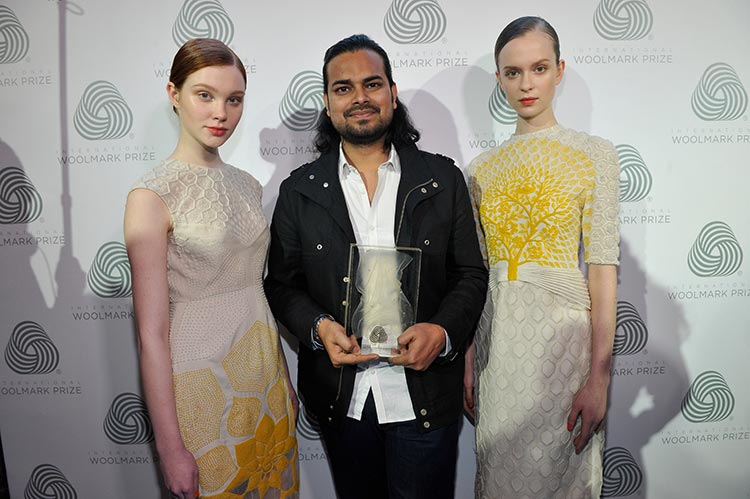
Designer Rahul Mishra at the 2013/14 International Woolmark Prize final in Milan.
“This prize has a real record, and I think it’s marvellous that now it seeks out young, unknown designers and gives them their big chance,” said Colin McDowell, fashion commentator and ongoing mentor to the prize. Starting with a single piece of yarn, Belgian designer Christian Wijnants took a chance in the 2012/13 edition and found great and enduring success on a scale not unlike Mishra. Wijnants still maintains his place on the official Paris Fashion Week schedule, and his garments are currently stocked in some 60 stores in more than 20 countries.
Showing the dedication of the program and commitment to its mission, more than 600 designers have benefited from the International Woolmark Prize since 2012, mentored and educated by industry heavyweights. “To help discover young talents is something that’s important for Woolmark, but it’s important even for everybody because fashion needs to have young talent,” said Franca Sozzani, the late editor-in-chief of Vogue Italia and judge – and ardent supporter – of the International Woolmark Prize on four occasions.
Integral to the identity of wool and at the core being of young designers is innovation. “Fashion thrives on change, and in the future, that change will be driven more and more by unique design voices – talented individuals whose passion inspires new ways of working with traditional forms and fabrics,” explains Tim Blanks, editor-at-large for the Business of Fashion and returning judge of the International Woolmark Prize. Deliberately broad, this term ‘innovation’ is perhaps the most fundamental element of the prize, as the fibre’s natural structure allows it to be used in more ways than have thus been imagined, and the designers of the future are exactly the people to do so.
In 2017, a dedicated Innovation Award began to make this value known and American designer Christopher Bevans of DYNE received the inaugural award. Bevans joined the prestigious list of American designers who have all innovated with wool and indeed continue to do so, including Dao-Yi Chow and Maxwell Osborne of Public School and Marcia Patmos of M.PATMOS, who won the menswear and womenswear awards in 2014/15, respectively, and Gabriela Hearst, who took out the womenswear award two years later.
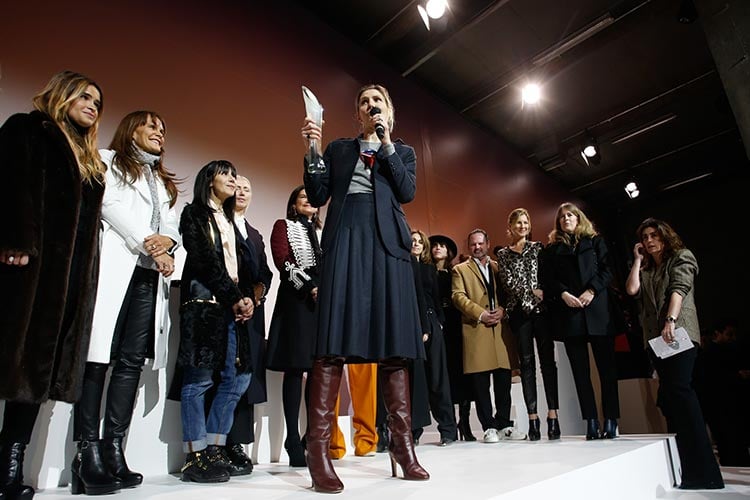
Gabriela Hearst accepts the womenswear award at the 2016/17 International Woolmark Prize final in Paris.
When Donatella Versace judged the global final in 2013 alongside Victoria Beckham, Diane von Furstenberg and Franca Sozzani, she explained: “There are many interesting young people out there right now. Especially those who are capturing the essence of today in their own way, without copying anyone and by being themselves. Having the courage to state your ideas, today, it’s something rare. That’s why great initiatives such as the International Woolmark Prize are so important to me.”
In February 2019, London-based designer Edward Crutchley made history becoming the first designer to win both the International Woolmark Prize for Menswear and the Award for Innovation. Returning to London Fashion Week, Crutchley and his fellow finalists were in the company of past London-based winners including Catherine Teatum and Rob Jones of Teatum Jones, Ben Cottrell and Matthew Dainty of COTTWEILER, and Matthew Miller, who took home the menswear prize in February of 2018 during Pitti Uomo in Florence. US label Colovos, presenting a circular proposition for its wool collection, was awarded the prestigious prize for womenswear. “Environmental and sociological transparency in any business today is becoming extremely important; the impact and responsibility you have when you make anything new for consumers needs to have accountability,” explained husband and wife team Michael and Nicole Colovos.

Runway of Finalists’ collections at the London Final in 2020.
London was again the backdrop for the 2020 final, this year consolidating the Men’s and Women’s prizes to one award, reflecting the industry’s move towards unisex collections and awarding top honours to Irish designer Richard Malone. The Innovation Award was renamed the Karl Lagerfeld Award for Innovation, paying homage to one of the award’s most illustrious past winners, with US label BODE becoming the inaugural recipient. Traceability was also introduced this year to further champion the eco-credentials of wool and enhance the importance of supply chain connection. “The International Woolmark Prize has never been more needed – a conduit to educate and provoke new ideas and ways of working invoking sustainability, accessibility and equity,” explains Sinéad Burke - academic, teacher, writer advocate and IWP judge. “With mentoring and funding, it shapes the trajectory for a new generation of designers in a meaningful and transformative way.” Mentorship for all finalists took on an even greater role, with the establishment of the Innovation Academy, reflecting the The Woomark Company’s ethos to support and nurture emerging design talent.
As the COVID-19 pandemic quickly took over the world in 2020, every industry entered uncharted territory. It quickly became a time to pause and reflect, reassessing day-to-day operations for both the short-term and the future. The six finalists were involved in industry masterclasses, online mentoring, workshops and extra fabric sourcing assistance to help navigate these unprecedented times. “Now more so than ever, in these incredibly challenging times for our industry, we must continue to support and nurture the emerging voices in fashion design,” says model, activist and IWP Advisory Council member Naomi Campbell. “They are the future, and I look forward to seeing what creative and innovative work comes out of this year’s entries to push our industry's ongoing mission in diversity and sustainability.” Going 100% digital for the first time, the UK’s Matty Bovan was awarded the main prize as well as the Karl Lagerfeld Award for Innovation. "He is pure fashion, he makes me dream and he reminds me of a young Vivienne Westwood or a John Galliano and we desperately need that sort of designer in the fashion world of today," said Carine Roitfeld, Founder CR Studio, CR Fashion Book and Carine Roitfeld Parfums.
The 2022 International Woolmark Prize saw some return to normality, with the final event once again taking place in London, celebrating the art of play and partnering with the Isamu Noguchi Foundation and Garden Museum. The immersive final showroom was inspired bythe sculptural playscapes of Isamu Noguchi that offered a radical potential for physical and social interaction, showcasing the seven finalists’ collections with colourful, architectural displays. London-based designer Saul Nash was awarded the main prize, praised for his modern use of Merino wool to bridge a gap between active solutions and more formal requirements. The Karl Lagerfeld Award for Innovation went to South Africa's MMUSOMAXWELL’s, whose collection was committed to reducing its environmental impact and upskilling traditional craftsmanship.
As a pillar of the fashion industry’s future, the prize looks to continue its long legacy of supporting emerging designers in ways that allows them to connect, develop and commercialise their brands.
Through all its evolutions, the International Woolmark Prize remains to truly be a catalyst for fashion talent on a global scale. In a moment of speculation, we only need to think where we would be if in 1954, Dior and Saint Laurent were to not cross paths during the final of the competition. Their shared vision of beauty would have undoubtedly converged at some point, though history and our garments would not look quite the same.

